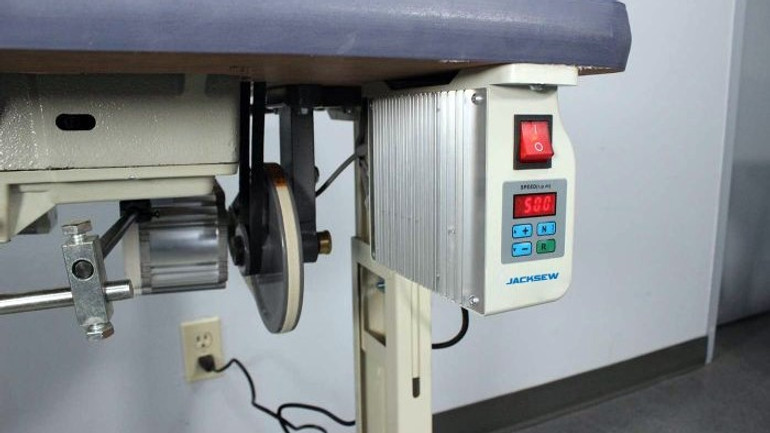In the realm of industrial sewing, speed and precision are paramount. While adjustable-speed servo motors have revolutionized the control and efficiency of sewing machines, the addition of a speed reducer attachment takes this a step further. This article explores the purpose and benefits of integrating a speed reducer with the adjustable-speed servo motor on industrial sewing machines.
Understanding the Speed Reducer Attachment
A speed reducer is a mechanical attachment that can be added to the adjustable-speed servo motor of an industrial sewing machine. Its primary function is to decrease the speed at which the machine operates while simultaneously increasing the torque. This adjustment offers several advantages, especially when dealing with heavy fabrics or complex sewing tasks.
Key Benefits of Speed Reducers
- Enhanced Control for Precision Sewing: By slowing down the sewing speed, operators gain finer control over the stitching process. This is particularly beneficial for detailed or intricate sewing tasks where precision is crucial.
- Increased Torque for Heavy Fabrics: With the increased torque provided by the speed reducer, sewing through thick or heavy materials becomes easier. This is essential for industries that regularly work with dense materials like leather or upholstery fabrics.
- Improved Stitch Quality: Slower sewing speeds can lead to more consistent and higher quality stitches. This is especially important in professional garment production where stitch uniformity is a marker of quality.
- Reduced Risk of Mistakes and Material Damage: A common challenge in high-speed sewing is the potential for errors and material damage. The speed reducer mitigates this risk by allowing more time for the operator to react and make adjustments during the sewing process.
- Extended Machine Lifespan: Operating at lower speeds can reduce wear and tear on the sewing machine, potentially extending its lifespan. This is a significant advantage given the investment in industrial sewing equipment.
Ideal Use Cases for Speed Reducers
- Leather and Upholstery: In industries where thick and heavy materials are the norm, such as in leather goods manufacturing or upholstery, speed reducers are particularly beneficial.
- Detailed Embroidery and Decorative Work: For tasks that require a high level of detail, such as embroidery or decorative stitching, the added control from a speed reducer is invaluable.
- Training and Skill Development: For operators who are learning or improving their sewing skills, a slower speed can facilitate a better learning environment.
The addition of a speed reducer to the adjustable-speed servo motor on industrial sewing machines represents a significant advancement in sewing technology. By enhancing control, improving stitch quality, and facilitating work with heavy materials, speed reducers have become a valuable tool in various sectors of the textile industry. Whether it’s for fine-detail work or handling challenging materials, the integration of this attachment is a game-changer in industrial sewing.


 Canadian Dollar
Canadian Dollar

